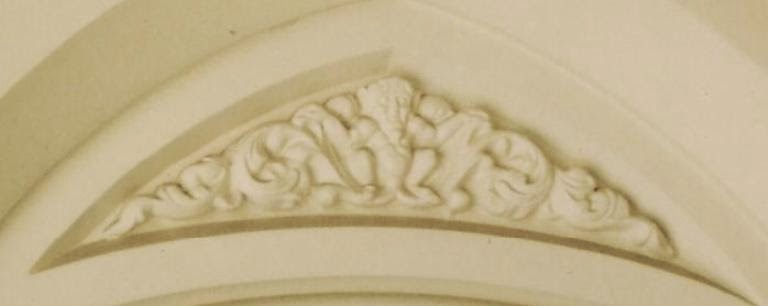One of my favourite Auckland structures is the Supreme Court Building. It is redolent with reference and symbolism belonging to another time and place. It amuses me too. The story behind its construction is page after page of misunderstandings, acrimony, dispute, botch-up and patch up. Yet it still stands intact on the original site. Married to a 20th century sibling it still provides a venue for the legal system which, like the building, was planted here.
 |
| These images are part of a photo essay completed for BFA by D Crozier 2003 |
The designer was Edward Rumsey. He chose English Gothic design for this public building, intended for the high point of Barrack Hill. Government House was nearby, as was the army barracks and commissariat. Visually he was calling up a romanticised heritage of might and magisterial power, of the glorious past associated with medieval english social structures - crown, church and state.
I include the full news coverage of the plans here. Enjoy this optimistic exploration of the design:
 |
| NZH 28 Feb 1865 |
Rumsey's design still 'stands forth bravely' as a beautiful addition to our city, but the road to completion and healthy usefulness was a long one.
Amos and Taylor began work on the building under the Clerk of Works Angus Mckay. The foundation stone was laid on 5 November 1865. By January 1867 the roof trusses were being put in place. Business relationships were deteriorating between government staff and McKay, as well as between government staff and the contractors. Accusations of dishonesty, overt or implied, soured working conditions even further. There were issues around payments, materials and supply. The architect was involved in some acrimonious exchanges as well.
Fresh tenders were called at this stage of the project. McKay's resignation was accepted.
 |
| NZH 23 Feb 1867 |
Matthews & Bartley Builders took over the construction from April 1867 to January 1868. Edmund Matthews had the experience and skill for these large, public projects. Young Edward Bartley had the energy and enthusiasm to see the construction finished.
Completion took some time to achieve.
Here is the report made early in 1871
 |
NZH 11 April 1871 |
Plasterers were still working on the site in the winter of 1875. (Daily Southern Cross 2 July 1865) The acoustics and the leaks continued to be worked on for many years.
We have on file a letter describing a first hand experience of approaching this building in 1876.
'...The
Supreme Court Building was a prominent feature of the high ground to the seaward
side of the Barracks. The tower of the building could be seen some distance
away and the contrast of white plaster detailing against red brick marked it as
an unusually substantive structure in a town of predominantly weatherboard and
single storey dwellings. In closer proximity realistically wrought heads of
both worthies and demons peered down from the crenellated roof line....The
dim entrance made a forbidding contrast after the bright February sun and heat
outside .' BFA LL A.S
Yes. This listed building is one of our architectural treasures. It may be anachronistic. It may have a chequered history, but the sculptures Anton Teutenberg created, the window tracery the plasterers laboured over and the features Rumsey held as ideals in his mind are there for us all to enjoy.











